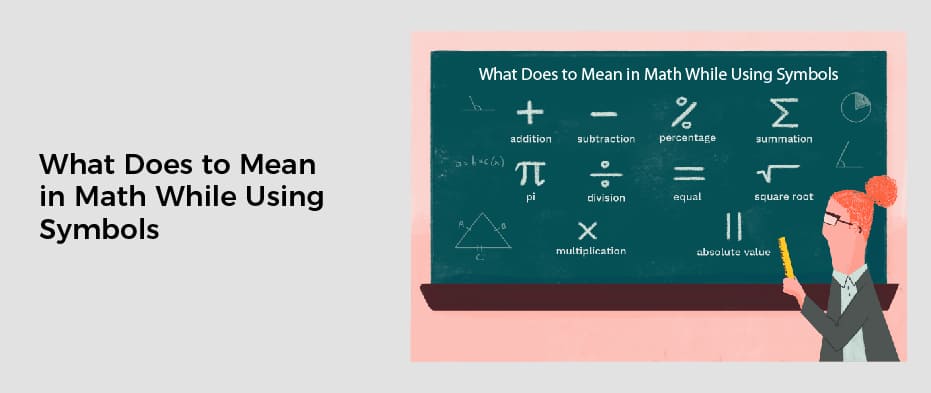
What Does to Mean in Math While Using Symbols
Table of Contents
When it comes to mathematics, the term “to” is used in a variety of ways. It can mean addition, subtraction, multiplication, or division; it can refer to certain operations within an equation and even be used as part of a comparison. In this article, we’ll take a look at what “to” means in math and what it can signify in different contexts.
At Least(≥)
- Greater Than or Equal To
Using the at least symbol in a math equation indicates a variable’s maximum or minimum value. It is also useful in mathematics for signaling the relationship between two variables.
“At least” can mean many things, but the most important is the smallest possible number, in this case, seven. It is also the smallest possible amount of money in this context.
However, it can be tricky to determine the exact number, but seven is a safe bet. It may also be a number that is higher or lower than seven, but this is a matter of opinion.
The at least symbol is also commonly used in a number of math and science disciplines. For instance, the at least symbol is used in statistics to signify the best or worst case scenario and in math to indicate a variable’s max or minimum values.
At Most (≤ b) Symbol in Math
- A is less than or equal to b
Using the most in a math statement is no different than using a number in a real-life context. At most is an abbreviation for a number that is to the left of a number. For instance, if you try making homemade ice cream, at most, three or four scoops should suffice.
Unsurprisingly, “at most” is a common part of the English language. In addition to the above mentioned at most, there is at least and at least as well as at least. In math, the at most may have more than one meaning.
Furthermore, in the context of a math statement, “at least” is a more specific version of “at least you have a computer.” It can also be used as a verb to refer to something to be done at least once.
Mode
Using mode in math is a great way to identify a large data set’s frequency distribution quickly. This measure of central tendency can be used for quantitative data as well as qualitative data.
It may seem overwhelming when you first learn how to calculate mode in math. However, once you understand the way it works, it becomes intuitive. Using a small data set can make it easy to calculate the mode on paper.
Mode is the value repeated most often in a data set. It can also be compared to a statistical mean or median. In a skewed distribution, the mode value may not be the same as the median or mean.
Range
- Use to set notations
The range is great for working with averages or a large data set. This is because it will help you find the spread in the data. It also makes it easier to find the difference between a set’s lowest and highest values.
A range is a set of possible results after performing all operations defined by a function. In the example of a function f:R-R, there is a set of possible results and a set of possible input values. The two sets can be arranged in ascending order.
Ratio (:)Symbol in Math
Understanding ratios is crucial whether you are studying for a math exam or trying to get a job with math requirements. There are many ways to express ratios, but the most common is with the ratio symbol “:”
Ratios can be represented in three different ways. First, they can be written as a fraction, as “1 to 2,” or as “2 to 3”. Typically, the first number is a divisor, and the second is the antecedent.
Ratios are a useful tool when comparing things. For example, if you are cooking, you may need to multiply the ingredients of your cake by a ratio of 5:10:15. That means you need 5 cups of butter, 10 cups of sugar, and 15 cups of flour.
Ratios are usually positive. For example, a ratio of 3 to 6 means half as many boys as girls in a classroom. Similarly, a ratio of 1:5 means that a quarter of the fruit basket is apples.